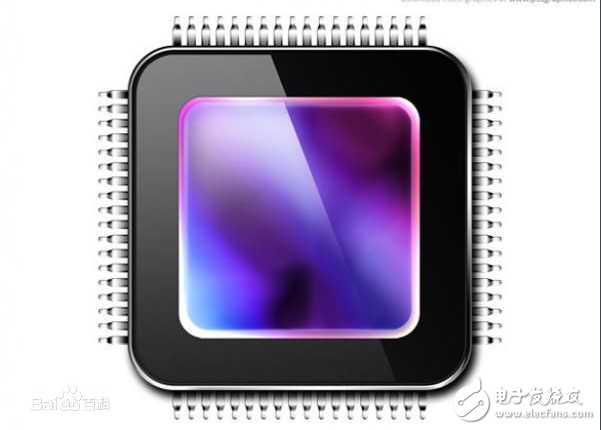Graphics Processing Unit (English: Graphics Processing Unit, GPU), also known as display core, visual processor, display chip, is a special type of personal computer, workstation, game console and some mobile devices (such as tablets, smartphones) Etc.) A microprocessor that works on image operations.
The purpose is to convert and display the display information required by the computer system, and provide a line scan signal to the display to control the correct display of the display. It is an important component for connecting the display and the main board of the personal computer, and is also one of the important devices for "human-machine dialogue". . As an important part of the computer host, the graphics card undertakes the task of outputting display graphics. It is very important for people who are engaged in professional graphic design.
The graphics card's processor is called the graphics processing unit (GPU), which is the "heart" of the graphics card, similar to the CPU, except that the GPU is designed to perform complex mathematical and geometric calculations that are required for graphics rendering. . Some of the fastest GPUs integrate more transistors than regular CPUs.
Most of today's GPUs have 2D or 3D graphics acceleration. If the CPU wants to draw a two-dimensional graph, just send an instruction to the GPU. For example, "Draw a rectangle with a length and width of a&TImes;b at the coordinate position (x, y)", the GPU can quickly calculate the graph. All the pixels, and draw the corresponding graphics on the specified position on the display, notify the CPU "I finished painting" after painting, and then wait for the CPU to issue the next graphics command.

With the GPU, the CPU is freed from the task of graphics processing, and can perform other system tasks, which can greatly improve the overall performance of the computer.
The GPU generates a lot of heat, so it usually has a heat sink or fan mounted above it.
The GPU is the "brain" of the display card. The GPU determines the grade and most of the performance of the graphics card. At the same time, the GPU is also the basis for the difference between the 2D graphics card and the 3D graphics card. The 2D display chip mainly relies on the processing power of the CPU when processing 3D images and special effects, which is called soft acceleration. The 3D display chip concentrates the three-dimensional image and special effects processing functions on the display chip, which is also called the "hardware acceleration" function. The display chip is typically the largest chip on the display card (and the most pin-up). Most of the graphics cards on the market today use graphics processing chips from NVIDIA and AMD-ATI.
GPU is no longer limited to 3D graphics processing. The development of GPU general-purpose computing technology has attracted a lot of attention in the industry. It has also been proved that GPU can provide tens of times or even hundreds of times in terms of floating-point computing and parallel computing. CPU performance, such a powerful "new star" will inevitably make the CPU maker boss Intel nervous for the future, NVIDIA and Intel also often engage in war of words for the CPU and GPU who are more important. The standards for GPU general-purpose computing currently include OpenCL, CUDA, and ATI STREAM. Among them, OpenCL (full name Open CompuTIng Language, open computing language) is the first open, free standard for general purpose parallel programming of heterogeneous systems, and is a unified programming environment, which is convenient for software developers to be high-performance computing servers and desktops. Computing systems, handheld devices that write efficient and lightweight code, and are widely used in multi-core processors (CPUs), graphics processing units (GPUs), Cell-type architectures, and other parallel processors such as digital signal processors (DSPs), in games, Entertainment, scientific research, medical and other fields have broad prospects for development. AMD-ATI and NVIDIA's current products support OPEN CL.
On August 20, 1985, ATi was established. In October of the same year, ATi developed the first graphics chip and graphics card using ASIC technology. In April 1992, ATi released the Mach32 graphics card to integrate graphics acceleration. ATi, April 1998 IDC was selected as the market leader in the graphics chip industry, but at the time there was no GPU title for this chip. For a long time, ATI called the graphics processor VPU, and it was not until AMD acquired ATI that its graphics chip was officially Use the name of the GPU.
When NVIDIA released the GeForce 256 graphics processing chip in 1999, it first proposed the concept of GPU. Since then, the core of the NV graphics card has been referred to by this new name GPU. The GPU cuts the graphics card's reliance on the CPU and implements some of the original CPU work, even in 3D graphics processing. The core technologies used by GPUs include hardware T&L, cube environment texture mapping and vertex blending, texture compression and bump mapping, dual-texture four-pixel 256-bit rendering engine, and hardware T&L technology can be said to be the GPU logo.
CPUThe Central Processing Unit (CPU) is a very large-scale integrated circuit that is the computing core (Core) and the Control Unit of a computer. Its function is mainly to explain computer instructions and to process data in computer software.
The central processing unit mainly includes an arithmetic unit (Arithmetic Logic Unit, ALU, Arithmetic Logic Unit) and a cache (Cache) and a bus (Bus) for realizing data (Data), control and status between them. It is combined with internal memory (Memory) and input/output (I/O) devices as the three core components of the computer.
The CPU includes arithmetic logic components, register components, control components, and the like.
Logical component
English Logic components; arithmetic logic components. You can perform fixed-point or floating-point arithmetic operations, shift operations, and logic operations, as well as address operations and conversions.
register
Register components, including registers, special registers, and control registers. General-purpose registers can be divided into points and floating-point numbers. They are used to store register operands and intermediate (or final) operation results that are temporarily stored during instruction execution. General purpose registers are one of the important components of a central processing unit.
Control unit
English Control unit; control component, mainly responsible for decoding the instructions, and issuing control signals for each operation to be performed for each instruction.
There are two kinds of structures: one is micro-program control with micro-memory as the core; the other is control mode based on logical hard-wiring structure.
The microcode is kept in micro memory. Each microcode corresponds to a basic micro-operation, also called microinstruction; each instruction is composed of different sequences of microcodes, and the microcode sequence constitutes a microprogram. After the central processor decodes the instructions, a certain timing control signal is issued, and a plurality of micro-operations determined by the micro-codes are executed in the order of the given sequence in micro-cycles to complete the execution of an instruction.
Simple instructions consist of (3 ~ 5) micro-operations, and complex instructions consist of dozens of micro-operations and even hundreds of micro-operations.
CoprocessorCoprocessor, a chip used to mitigate specific processing tasks of a system microprocessor.
Coprocessor, a processor that is developed and applied to assist the central processor in performing its inefficient or inefficient processing. There are many tasks that the central processor cannot perform, such as signal transmission between devices, management of access devices, etc., and graphics processing, audio processing, etc., with low execution efficiency and low performance. In order to carry out these processes, various auxiliary processors were born. It should be noted that since the integer operator and the floating-point arithmetic unit are already integrated in the current computer, the floating-point processor is not considered as the auxiliary processor. The coprocessor built into the CPU is also not a secondary processor unless it is independent.
The demise of the coprocessor
Before the 80486CPU had a coprocessor, it improved the floating-point computing power. At that time, the coprocessor was weaker than the coprocessor. The speed was hundreds of times. The PC usually does not have a coprocessor.
ARM microprocessor
The ARM microprocessor can support up to 16 coprocessors for various co-processing operations. During the execution of the program, each coprocessor executes only its own co-processing instructions, ignoring the ARM processor and other protocols. The instructions of the processor. ARM's coprocessor instructions are primarily used by the ARM processor to initialize the data processing operations of the ARM coprocessor, as well as to transfer data between the registers of the ARM processor and the registers of the coprocessor, and the registers and memories of the ARM coprocessor. Transfer data between. The ARM coprocessor instructions include the following five: — CDP coprocessor operand instructions — LDC coprocessor data load instructions — STC coprocessor data store instructions — MCR ARM processor registers to coprocessor registers for data transfer instructions — Data transfer instructions from the MRC coprocessor register to the ARM processor registers.
ARM: The coprocessor includes the following five:
CDP: Coprocessor data manipulation instructions.
LDC: Coprocessor data load instruction.
STC: Coprocessor data storage instructions.
MCR: Data transfer instruction from ARM processor register to coprocessor register.
MRC: Data transfer instruction from the coprocessor register to the ARM processor register.
How to work as a coprocessor for the CPUCoprocessor, a chip used to mitigate specific processing tasks of a system microprocessor.
CPU: Abbreviation for Center Process Unit, translated as central processing unit. Also called a microprocessor. Refers to a large-scale integrated circuit with the functions of an arithmetic unit and a controller.
GPU: (Graphic Processing Unit) graphics processing chip. It is the "heart" of the display card, which is equivalent to the role of the CPU in the computer. It determines the grade and most of the performance of the graphics card, and is also the basis for the difference between the 2D graphics card and the 3D graphics card. The 2D display chip mainly relies on the processing power of the CPU when processing 3D images and special effects, and is called "soft acceleration". The 3D display chip concentrates the three-dimensional image and special effects processing functions on the display chip, which is also called the "hardware acceleration" function. The display chip is usually the largest chip on the display card.
FPU: (Float Point Unit) floating-point unit, FPU is a processor dedicated to floating-point operations, the previous FPU is a separate chip, after 486, Intel integrated the FPU with the CPU.
Flash Vape
Flash Vape is very popular in bars, and it is also a good choice for friends to get together. Our company supplies several brands of Flash disposable electronic cigarettes, such as hebat, Maskking, Lana, Relx, FOLI, etc
We are the FOLI brand, and also a professional trading company. Welcome to order disposable e-cigarettes from us, just with a minimum order quantity of 100, which can be shipped to all parts of the world.
Maskking Vape 1500 Puffs,
Hebat vape 1000 puffs
FOLI BAR Disposable Vape 2500 puffs
LANA Vape 2000 Puffs
Relx Vape 600 Puffs


Flash Vape,Disposable Vape RGB,Flash Vape Pen,Flash Vape Disposable,Flash Vape Juice
Tsvape E-cigarette Supplier Wholesale/OEM/ODM , https://www.tsecigarette.com